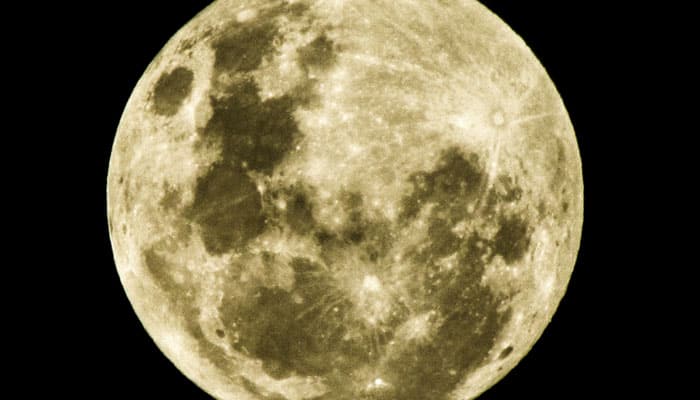Washington: A giant mound near the Moon's south pole appears to be a volcanic structure unlike any other found on the lunar surface, according to a new study that used data from the Moon Mineralogy Mapper, which flew aboard India's Chandrayaan-1 spacecraft in 2008.
The formation, known as Mafic Mound, stands about 800 meters tall and 75 kilometres across, smack in the middle of a giant impact crater known as the South Pole-Aitken Basin.
The study suggests that the mound is the result of a unique kind of volcanic activity set in motion by the colossal impact that formed the basin.
"If the scenarios that we lay out for its formation are correct, it could represent a totally new volcanic process that's never been seen before," said Daniel Moriarty, a PhD student in Brown University's Department of Earth, Environmental and Planetary Sciences and study's lead author.
Mafic Mound (mafic is a term for rocks rich in minerals such as pyroxene and olivine) was first discovered in the 1990s by Carle Pieters, a planetary geologist at Brown and Moriarty's adviser.
What makes it curious, other than its substantial size, is the fact that it has a different mineralogical composition than the surrounding rock. The mound is rich in high-calcium pyroxene, whereas the surrounding rock is low-calcium.
Moriarty and Pieters looked at a rich suite of data from multiple lunar exploration missions. They used detailed mineralogical data from the Moon Mineralogy Mapper, which flew aboard India's Chandrayaan-1 spacecraft.
NASA's Lunar Orbiter Laser Altimeter provided precise topographic data, and data from the GRAIL mission characterised gravitational anomalies in the region.
Those combined datasets suggested that Mafic Mound was created by one of two unique volcanic processes set in motion by the giant South Pole-Aitken impact.
An impact of that size would have created a cauldron of melted rock as much as 50 kilometres deep, some researchers believe.
As that sheet of impact melt cooled and crystallised, it would have shrunk. As it did, still-molten material in the middle of the melt sheet may have been squeezed out the top like toothpaste from a tube. Eventually, that erupted material may have formed the mound.
Such a process could explain the mound's strange mineralogy. Models of how the South Pole-Aitken melt sheet may have crystallised suggest that the erupting material should be rich in high-calcium pyroxene, which is consistent with the observed mineralogy of the mound.
Another scenario that fits the data involves possible melting of the Moon's mantle shortly after the South Pole-Aitken impact. The impact would have blasted tonnes of rock out of the basin, creating a low-gravity region.
The research appears in the journal Geophysical Research Letters.
















